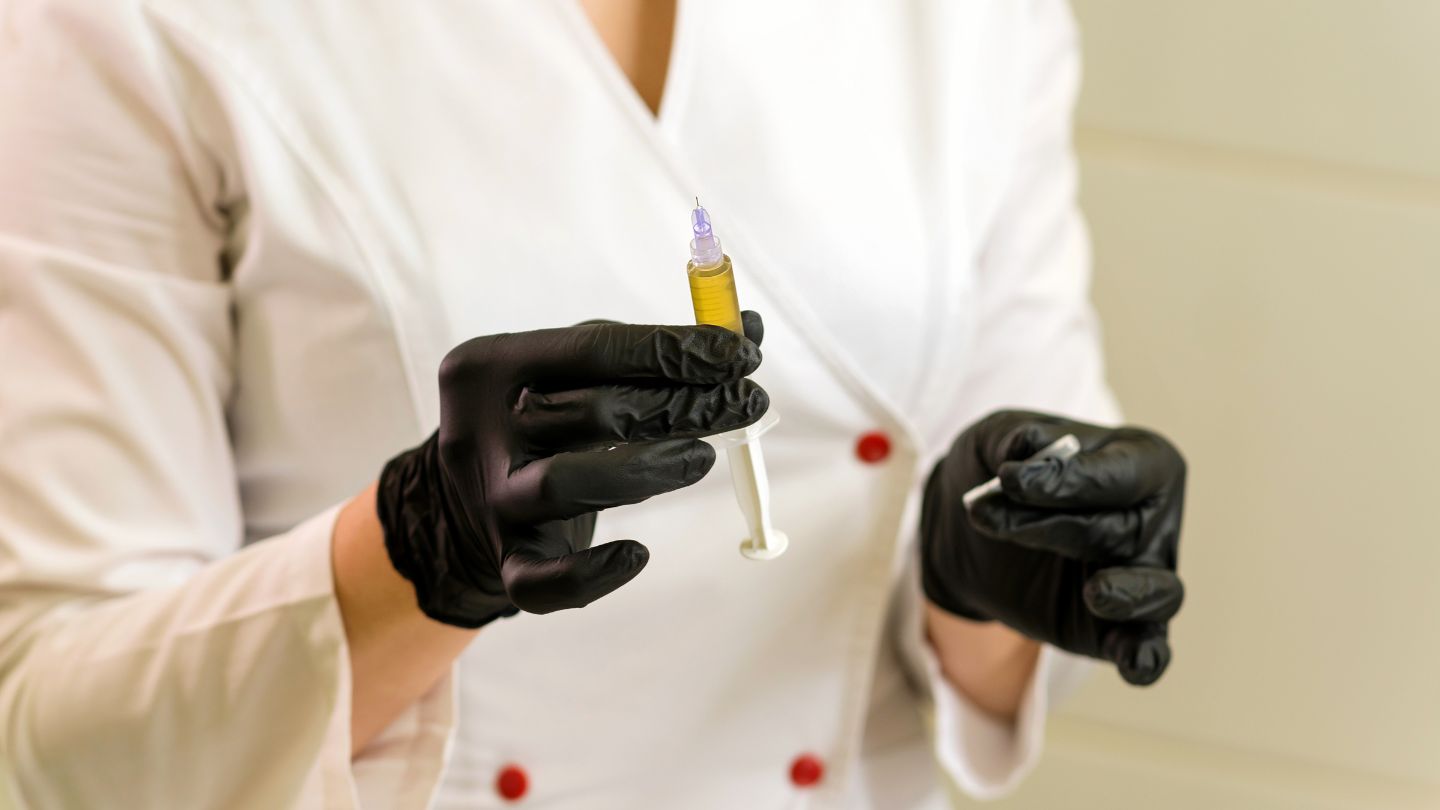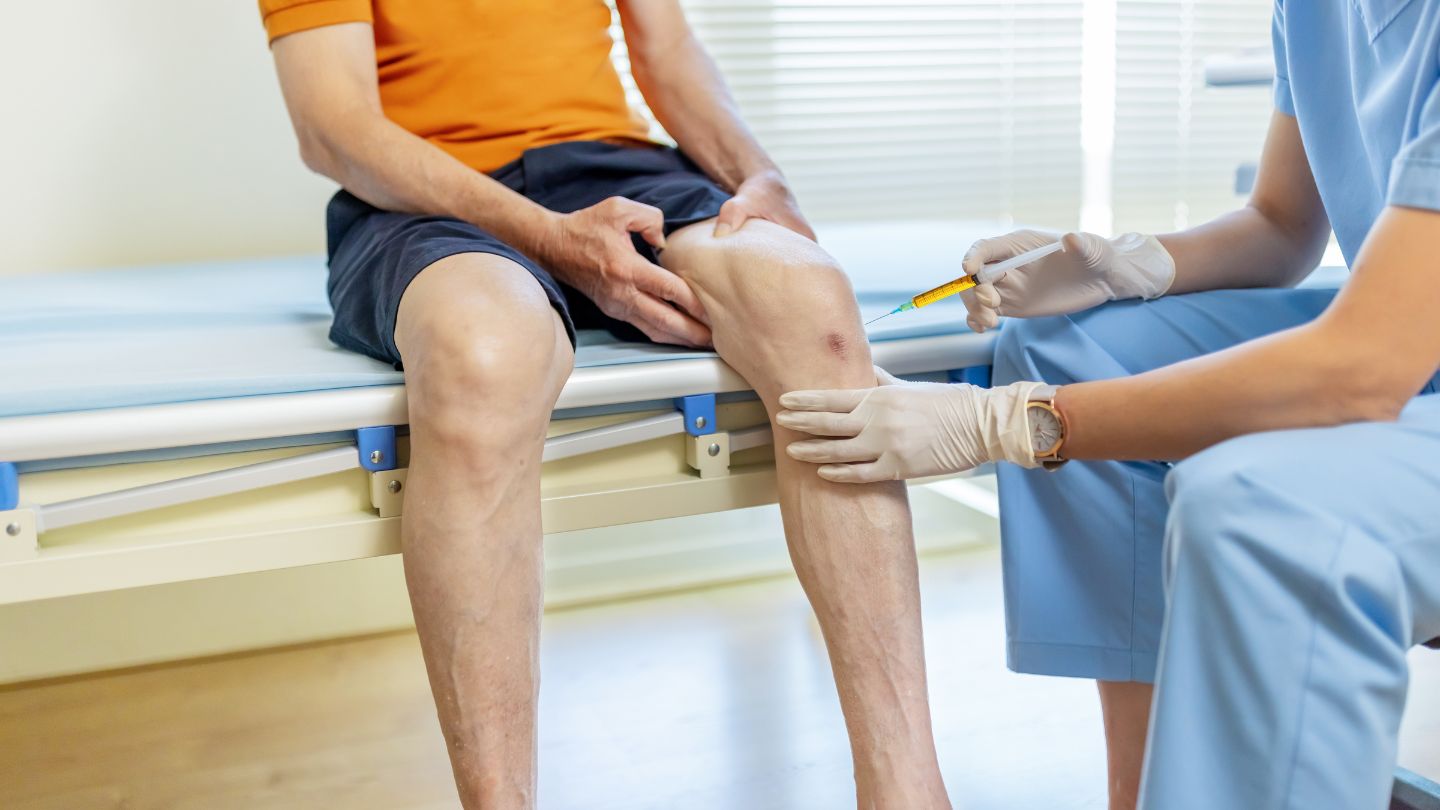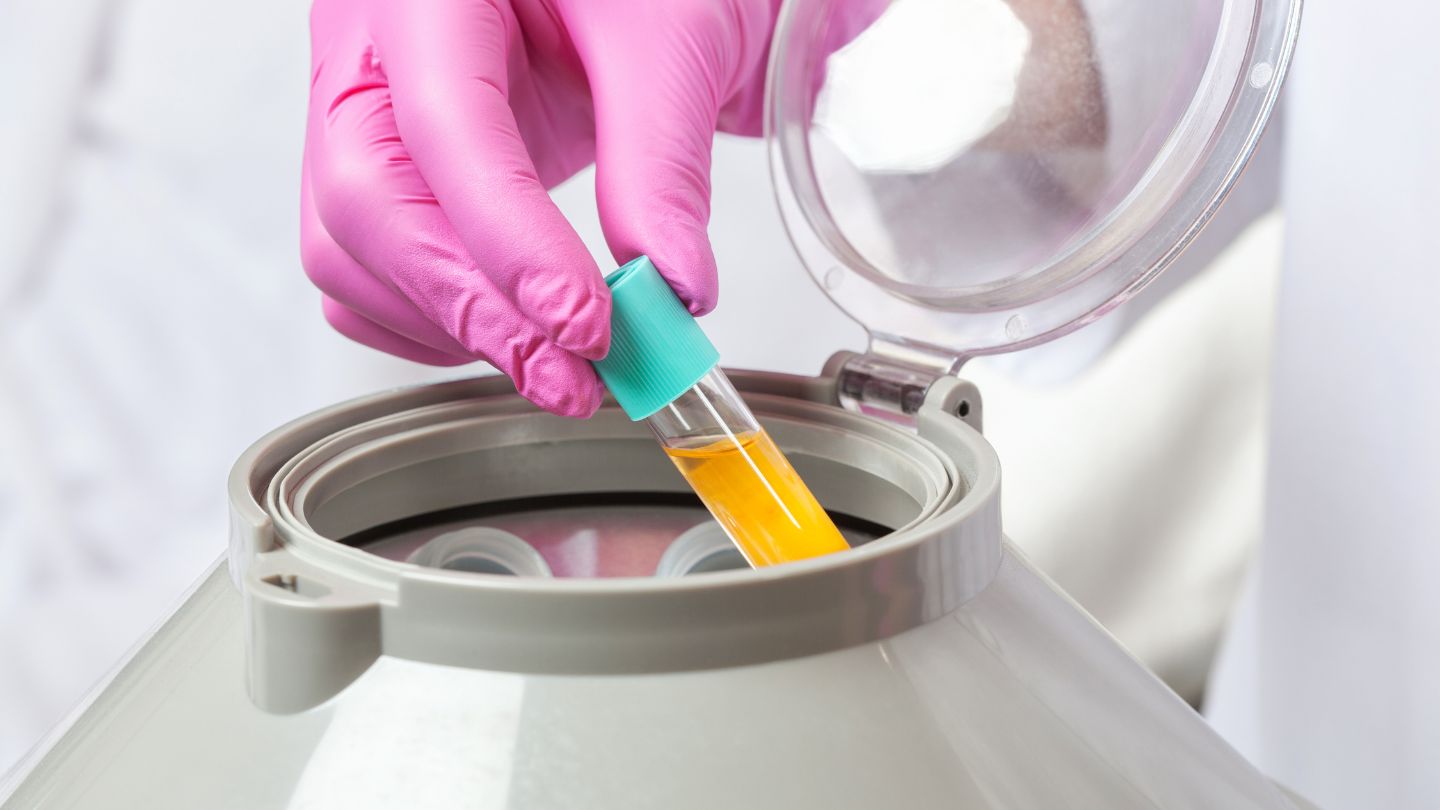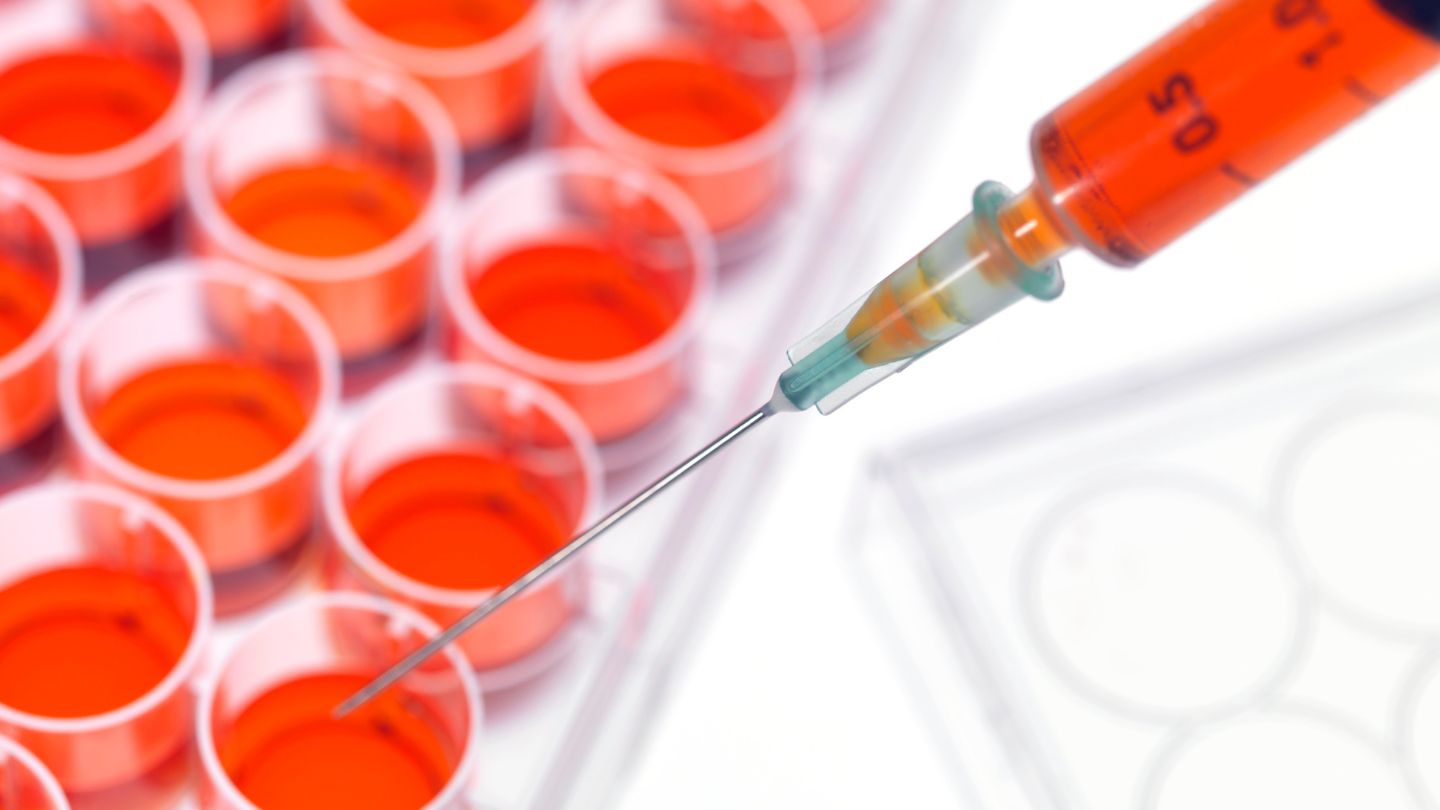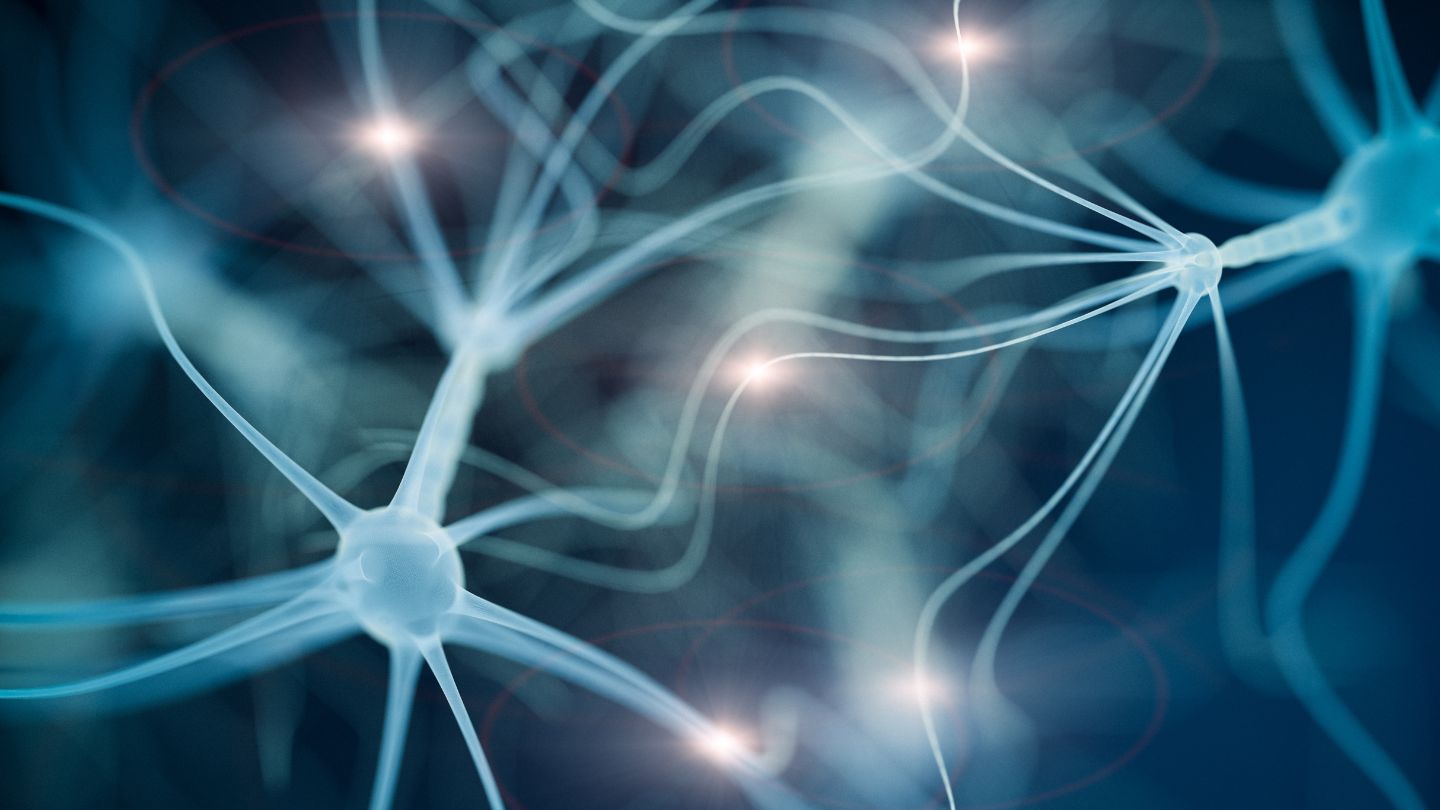Deciding between PRP injection vs stem cell therapy for pain relief? This article compares these two regenerative treatments to help you make an informed decision. PRP therapy uses platelets from your blood to speed healing, while stem cell therapy employs specialized cells for tissue regeneration. Read on to understand which option might be best for your needs.
Key Takeaways
- PRP therapy utilizes concentrated platelets from a patient’s blood to enhance healing, while stem cell therapy uses versatile stem cells to regenerate damaged tissues.
- Each therapy has distinct applications, with PRP suited for mild to moderate injuries and stem cell therapy ideal for severe conditions such as ligament ruptures and degenerative diseases.
- Combining PRP and stem cell therapies can enhance healing outcomes by leveraging the strengths of both methods, providing personalized treatment plans tailored to individual patient needs.
Introduction
In orthopedic medicine, regenerative medicine has become crucial for addressing injuries unresponsive to conventional treatments.
The core of regenerative medicine is to enhance the body’s natural ability to repair damaged tissues and alleviate pain. Its main goal is to speed up recovery while addressing the root causes of discomfort, making it a preferred alternative to surgical procedures for many patients. This article delves into PRP (platelet-rich plasma) therapy and stem cell treatment—two prominent forms of regenerative medicine.
These advanced therapies have proven successful in reducing pain, improving patient mobility, and aiding tissue repair. Stem cell therapy and platelet-rich plasma (PRP) are key options among these therapies.
PRP therapy involves taking a sample of the patient’s blood and concentrating the platelets to accelerate healing. These platelets release growth factors that boost the body’s natural wound-healing processes. Its safety, effectiveness, and cost-efficiency make it a widely favored treatment.
Stem cell therapy employs cells that have the potential to develop into various cell types, aiding in the repair of damaged tissues. These cells adapt to the specific needs of different body parts for effective restoration and reconstruction.
When choosing between PRP and stem cell therapy, it’s essential to consider your specific health condition and desired outcomes. Consulting with a healthcare professional can provide personalized recommendations for the most suitable treatment within regenerative medicine.
Understanding the key differences between these treatments, including their mechanisms and intended uses, equips you with the knowledge to decide which approach may be best suited to your health needs.
Dealing with issues like sports injuries, chronic pain, or degenerative conditions doesn’t have to be daunting. Regenerative medicine offers promising strategies that leverage your body’s healing capabilities to restore health.
Understanding Platelet Rich Plasma (PRP) Injection
PRP therapy is especially significant in orthopedic medicine and uses the body’s inherent mechanisms for healing. The blood-derived components of platelets and growth factors enhance recovery where conventional methods may be inadequate.
Platelet-rich plasma (PRP) is obtained from an individual’s blood and features concentrated levels of platelets compared to normal blood concentrations, thus substantially accelerating the body’s natural healing process.
How PRP Therapy Works
PRP therapy begins with a minor blood extraction from the patient, using an anticoagulant like citric acid dextrose (ACD-A) to prevent clot formation. The collected blood sample is subjected to high-velocity rotation in a centrifuge to segregate its constituents and amplify platelet concentration. This method can enhance platelet counts by approximately five to ninefold above typical levels.
Once the PRP has been prepared, it’s directed into the area affected by injury utilizing precision-guided methods such as ultrasound or other imaging tools for meticulous insertion. The concentrated platelets within PRP release growth factors that expedite the healing mechanisms inherent in our bodies, fostering cellular recruitment and multiplication.
Most post-injection, patients can resume their routine activities promptly. Some may encounter slight discomfort following treatment.
Benefits of PRP Therapy
PRP therapy is renowned for accelerated healing and tissue regeneration. Those undergoing treatment often notice quicker recuperation periods and diminished inflammation. It promotes cell movement toward injury sites, enhances cellular reproduction rates, and activates fibroblasts to facilitate tissue repair.
This method presents a significant benefit over surgical procedures due to its minimally invasive nature. As an autologous approach—leveraging substances derived from a patient’s blood—it inherently carries fewer risks of negative reactions compared to drug-based treatments or surgeries. PRP therapy doesn’t just alleviate pain but can bolster sleep quality while reducing dependence on narcotic medications typically used for managing discomfort.
Conditions Treated with PRP Therapy
PRP therapy has proven its efficacy in addressing various ailments that fall under the scope of regenerative medicine. It is especially advantageous for treating soft tissue injuries, including tendonitis, ligament sprains or tears, and osteoarthritis. PRP therapy can greatly improve recovery times and mitigate pain, stimulating the repair process of tendons and ligaments.
Atlanta Medical Institute customizes treatment protocols to cater to individual conditions such as joint injuries and osteoarthritis using PRP therapy. This bespoke approach guarantees a therapeutic regimen attuned to specific health requirements. This optimizes the success rate of each intervention.
Exploring Stem Cell Therapy
In regenerative medicine, stem cell therapy is a transformative treatment option. These specialized cells differentiate into diverse types of cells to restore and regenerate injured tissues. Stem cell therapy holds significant promise for addressing severe injuries and complex conditions that prove difficult to treat through alternative therapeutic approaches.
Types and Sources of Stem Cells
Stem cells are classified into two primary categories depending on their source: embryonic stem cells (ESCs) and adult stem cells (ASCs). Mesenchymal stem cells (MSCs), adult stem cells, are most frequently utilized for therapeutic purposes including immune system regulation. These MSCs can be derived from several tissues, including bone marrow and adipose tissue.
These versatile biological tools enhance regenerative medicine by providing physicians with options when selecting the optimal type of stem cell therapy. Mesenchymal stem cells’ unique properties help control immunological responses and promote healing processes for diverse medical conditions.
How Stem Cell Therapy Works
Stem cell therapy begins with stem cell extraction from its native environments, like bone marrow or fat tissue. These cells are then meticulously refined and concentrated in a laboratory setting, making them suitable for administration through stem cell injection. This preparation is crucial to ensure stem cells can effectively enhance healing and foster tissue repair once injected into injured tissue.
Upon administering these prepared stem cells to an affected area within a patient, they begin their work by taking over the functions of damaged cells and catalyzing the body’s intrinsic reparative mechanisms. The capability of these injected cells to reconstruct and mend tissues underscores their significance as powerful instruments within regenerative medicine—offering hope, especially for individuals grappling with profound injuries or persistent health issues.
Benefits of Stem Cell Therapy
Stem cell therapy presents multiple notable advantages, especially for healing damaged or diseased tissues and managing chronic illnesses.
The capacity of adult stem cells extends to the regeneration of a variety of tissue types, such as:
- muscle
- ligament
- tendon
- cartilage
- skin
This wide-ranging capability enables stem cell treatment to tackle numerous health issues.
A primary benefit of stem cell therapy is its ability to stimulate tissue regeneration by orchestrating a repair response and releasing therapeutic substances like exosomes. This reduces pain by fostering recovery and diminishing inflammation in compromised regions. For individuals with medical conditions that have proven refractory to conventional treatments, stem cell therapy offers an encouraging alternative.
Key Differences between PRP and Stem Cell Therapies
Understanding the mechanisms of action and treatment applications is essential when deciding between stem cell therapy and PRP therapy. Stem cell therapy relies on the differentiation of stem cells into new tissues for repairing damage, while PRP (platelet-rich plasma) therapy harnesses growth factors to improve healing.
Both therapies possess distinctive advantages and cater to various injuries and conditions with their unique strengths.
Mechanisms of Action
Platelets are essential in initiating healing processes, creating blood clots, and releasing growth factors that promote tissue regeneration. PRP therapy utilizes a concentration of these growth factors by injecting them into the injured area to enhance healing through paracrine signaling. Although effective for bolstering natural repair systems, its effectiveness is confined to what platelet functions can offer.
Stem cell therapy takes advantage of stem cells’ inherent ability to transform into various types of cells, offering a wider spectrum for repairing tissues. These stem cells foster tissue rebuilding and secrete exosomes and other important signaling molecules that improve the environment necessary for healing.
When PRP therapy is combined with stem cell treatment, it potentially creates an ideal setting for maximizing stem cell activities, which leads to better outcomes in terms of tissue restoration and recovery rates.
Treatment Applications
PRP therapy is often employed in sports medicine to address injuries like tendonitis and ligament strains. It has shown efficacy in handling mild to moderate cases of osteoarthritis and problems with tendons, especially within smaller joints of the hands and feet. PRP advances tissue repair while simultaneously decreasing inflammation for ailments, including osteoarthritis.
Stem cell therapy is typically reserved for more acute issues including degenerative diseases or severe injuries such as torn ligaments, slipped discs, and fractures. The decision-making process regarding whether to utilize PRP injections or stem cell injections frequently hinges on the severity of the medical condition and the nature of tissue damage.
Clinical research supports the integration of PRP treatments and stem cell therapies, particularly when managing conditions such as tendonitis and osteoarthritis.
Combining PRP and Stem Cell Therapies
Utilizing a blend of PRP and stem cell treatments can markedly improve tissue repair and regeneration, creating an ideal setting for healing. This strategy capitalizes on the synergistic benefits of both therapies, leading to accelerated and more effective recovery.
Enhancing the microenvironment with PRP optimizes conditions for stem cells, resulting in superior healing.
Synergistic Effects
Merging PRP with stem cell treatments stimulates all three stages of wound healing. When these therapies are used together, they can amplify the body’s natural healing processes and improve the speed of recovery and overall healing.
Case Studies and Clinical Evidence
Numerous clinical trials and case studies have substantiated the benefits of integrating PRP with stem cell therapies. Individuals grappling with chronic ailments such as tendonitis, injuries to the rotator cuff, and osteoarthritis have experienced marked improvement in pain management and restoration of function. This synergistic approach has diminished inflammation and fostered tissue repair for spinal disorders and herniated discs.
Studies suggest that recipients of combined PRP and stem cell therapy typically enjoy expedited healing periods with superior outcomes compared to those treated exclusively with one modality or the other. As research advances alongside ongoing clinical evaluations, these dual treatment strategies will continue to improve, potentially widening therapeutic options for various medical conditions.
Personalized Treatment Plans at Atlanta Medical Institute
At the Atlanta Medical Institute, our expertise lies in developing individualized treatments within regenerative medicine to meet each patient’s unique requirements. By combining stem cell therapies with PRP (platelet-rich plasma), we can provide tailored solutions for diverse medical issues, guaranteeing that every patient is afforded the most appropriate and effective treatment plan.
Consultation and Assessment
At the Atlanta Medical Institute, your personalized treatment journey begins with a detailed initial consultation with our healthcare professionals. During this meeting, we meticulously examine your medical history and particular health concerns to suggest optimal treatment pathways designed specifically for you. Our skilled team will explore your symptoms, desired outcomes from treatment, and past treatments that have been attempted to devise a bespoke plan that caters directly to what you require.
This comprehensive evaluation is crucial for us to gain an intricate understanding of your specific condition. This allows us to formulate a strategy that most effectively harnesses the capabilities of regenerative medicine. By zeroing in on individual health needs, our approach can be far more focused on alleviating pain and facilitating tissue repair.
Tailored Medicine Programs
At the Atlanta Medical Institute, our regenerative medicine initiatives are crafted to enhance recovery and healing in alignment with specific health history and therapeutic aspirations. We employ a combination of stem cell therapy alongside PRP (platelet-rich plasma) techniques designed to foster tissue regeneration while managing inflammation and advancing overall healing processes. Our mission is dedicated to supporting you on your journey toward peak health using cutting-edge regenerative medicine strategies tailored uniquely for you.
Summary
PRP and stem cell therapy present valuable options for alleviating pain and facilitating tissue repair. Utilizing a concentration of platelets, PRP therapy amplifies the body’s intrinsic healing mechanisms, which proves beneficial for conditions such as tendonitis and early stages of osteoarthritis. Stem cell therapy harnesses the distinctive capability of stem cells to morph into diverse types of cells, offering robust treatment possibilities for significant injuries and persistent ailments.
They can produce a collaborative effect that bolsters tissue regeneration and enhances overall recovery. At Atlanta Medical Institute, our commitment lies in devising individualized care plans that blend the strengths of both treatments to ensure our patients experience optimal efficacy from their personalized therapeutic interventions.
For those seeking respite from enduring pain or striving toward recuperation after substantial injury, our comprehensive regenerative medicine programs, including advanced medical weight loss in Atlanta, provide an all-encompassing route toward restoration and healthfulness.

